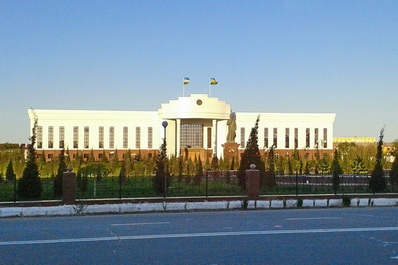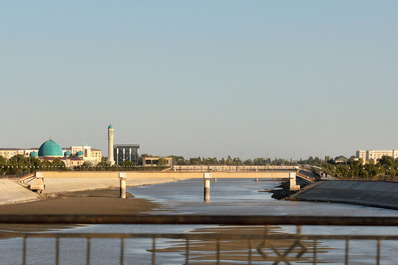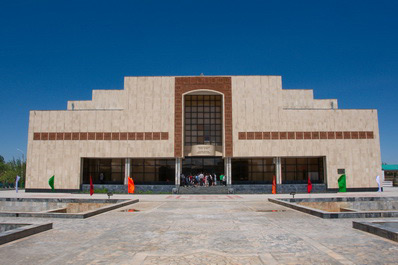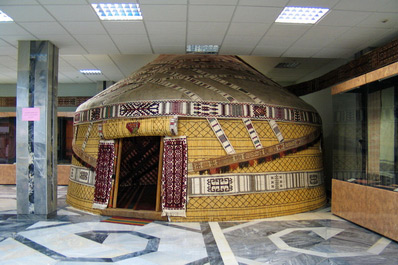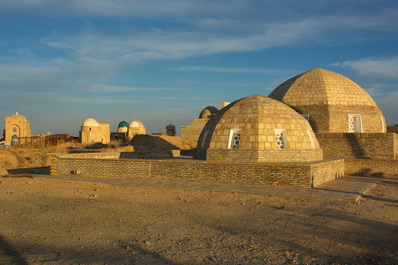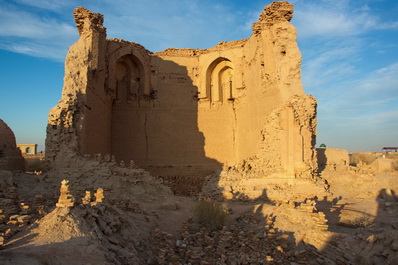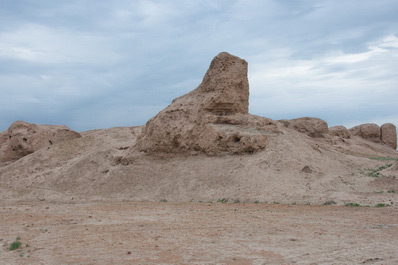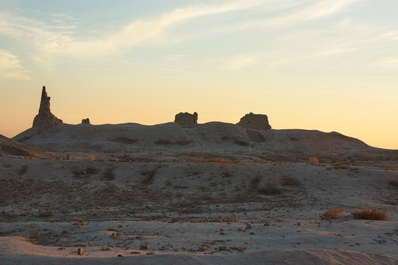Nukus, Karakalpakistan
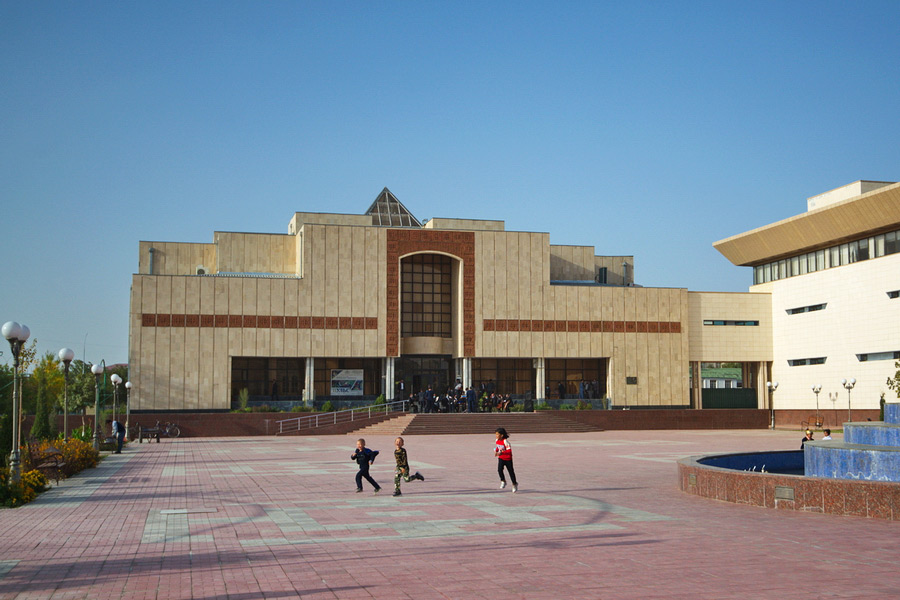
Former names: Shurcha
Altitude: 80 m above sea level
Popular languages Uzbek, Karakalpak, Russian
Time zone: UTC+5
Living nationalities: Karakalpaks, Uzbeks, Kazakhs, Russians, Tatars, Turkmens
International telephone code: +998 61
Postal code: 2301XX
Automobile codes: 95
Nukus, the captivating capital of Karakalpakstan, stands as one of Uzbekistan's most renowned cities. It's celebrated for housing the extraordinary Savitsky Museum, a gem not just for Uzbekistan but for the entirety of Central Asia. This museum boasts an unparalleled collection, featuring a diverse range of artworks including paintings, Central Asian jewelry, and historical relics from ancient Khorezm, among others.
In addition to its renowned museum, Nukus is also known for the ancient necropolis of Mizdakhan, shrouded in many legends, and the historic site of Gyaur-Kala. Beyond its historical and cultural significance, Nukus serves as the scientific, cultural, and economic hub of Karakalpakstan. It hosts the Jokargy Kenes, the principal governing body of the republic, various independent universities, and branches of Tashkent's institutes and universities. The city is also home to several factories.
Nukus is the perfect starting point for exploring Karakalpakstan, providing easy access to destinations like the Aral Sea and Muynak.
How to Get to Nukus?
Reaching Nukus is convenient via various modes of transport. The city is the primary aviation hub of Karakalpakstan, with regular flights arriving from Tashkent and Moscow at the local airport.
For those preferring rail travel, Nukus's railroad station connects it to cities like Tashkent, Samarkand, Navoi, Bukhara, Urgench, cities in the Fergana Valley, and even Volgograd.
If you're considering a road trip, keep in mind that Nukus is relatively remote. The nearest major city, Urgench, is 157 kilometers away, while the distance from Tashkent exceeds 1000 kilometers.
Additionally, one can travel to Nukus from Turkmen Dashoguz. This journey, including border crossing time, typically takes around three hours.
Is Nukus Safe?
Nukus is generally considered a safe city. However, it's advisable to be cautious about the drinking water quality here; purchasing bottled water from stores is recommended for your safety.
It's also wise to adhere to basic safety precautions like not leaving personal belongings unattended. Simple safety measures can make your stay more secure and enjoyable.
Brief History of Nukus
Perched on the banks of the Amu Darya River and edged by the Kyzylkum Desert to the east, Nukus has a rich history. Tracing back to the 4th century B.C., a settlement named Shurcha, which is today's Nukus, existed for almost 800 years. Archaeologists have uncovered artifacts and remains of fortresses from this era, with Gyaur-Kala fortress being a notable example from the 4th century B.C.
The area also features intriguing medieval structures, offering a fascinating glimpse into history not just for enthusiasts but for all visitors.
Nukus evolved from a village, also named Nukus, in the 1860s. The name 'Nokis', in Karakalpak language, refers to a clan of Karakalpaks which gained prominence in the 13th century as the Mongolian clan 'Nokhos'.
After the Russian Empire's conquest of Central Asia in 1874, a military fortress was established in Nukus. The same year also saw the opening of the first hydrometeorological station. In the following years, the establishment of a school and a hospital led to more people moving to Nukus, gradually transforming it into a city.
In 1930, Nukus became the capital of Karakalpakstan, moving from Turtkul. This change was due to the threat of Turtkul being washed away by the Amu Darya River.
Since then, Nukus has remained the central city of Karakalpakstan.
Nukus Sights & Attractions
Nukus, though modest in the number of attractions, boasts three significant sites, each worth the journey to Karakalpakstan.
Savitsky Museum
This museum, established by artist Igor Savitsky, is a magnet for art aficionados worldwide. Praised by publications like The New York Times and The Guardian, it's renowned for its beauty and significance. Savitsky founded it in 1966, initially gathering pieces during archaeological expeditions in Karakalpakstan, and later acquiring works from overlooked and unknown artists.
Today, it exhibits works by renowned artists like Pavel Surikov, Usto Mumin, Alexander Volkov, and Pavel Benkov. The museum is particularly famous for possessing the world's second-largest collection of Russian avant-garde paintings from the 1920s and 1930s. Additionally, it showcases a diverse range of other artistic styles and an extensive collection of antiquities, with its earliest exhibit being a rock drawing from the 2nd millennium BC.
Savitsky's personal collection amounts to about 90,000 items. His successor, Marinika Babanazarova, not only preserved but also expanded this impressive collection.
Mizdakhan: An Ancient Karakalpak Necropolis
Mizdakhan, a necropolis steeped in history, is among the oldest in Central Asia. Legend has it that it's the reburial site of Adam, considered the first man on Earth. A unique tomb here is said to lose one brick each year, and local lore suggests that the apocalypse will begin when the tomb completely crumbles. This has led to its nickname, the "apocalypse clock," with the remaining bricks supposedly indicating the time left until the end of the world.
Mizdakhan is also home to several renowned mausoleums, drawing thousands of Muslims annually. Notable among these are the 12th to 14th-century mausoleum of Nazlumkhan sulu (Mazlumkhan sulu), the mausoleum of Shamun-nabi, and the Jumart-Kassap mound. Each of these sites is enveloped in rich stories and legends that travelers are keen to uncover.
Nearby, one can find the ruins of a 13th to 15th-century Mongolian city and the remnants of the ancient Gyaur-Kala fortress. Gyaur-Kala, an ancient settlement, retains parts of its fortress walls. Archaeologists date its construction to the 4th century BC, but it gained its current name in the 8th century when Arabs conquered Central Asia. They named it Gyaur-Kala, meaning "fortress of the infidels," as it was then inhabited by Zoroastrians. The fortress walls once stood 10 meters high, enclosing ruins believed to be a palace and a significant religious structure. Evidence suggests Zoroastrian fire worship occurred here, indicated by the remains of hearths.
Luxurious items found within what is thought to have been a palace inside Gyaur-Kala suggest it was inhabited by the wealthy.
Food in Nukus
Nukus offers a delightful culinary experience with traditional Uzbek dishes like pilaf, manty, shashlik, and lagman. Authentic Karakalpak cuisine is equally tantalizing. Be sure to try zhueri gurtik (zhugeri gurtik), a local dish comprising boiled dough pieces resembling dumplings, made from special sorghum flour.
The bazaar in Nukus is a great place to sample unique Karakalpak flatbreads and turak, a traditional kurt made from dried sour milk.
Best Time to Visit Nukus
While planning a trip to Nukus, which is often included in tours to the Aral Sea, the ideal time to visit is between April and October. The winter months can be extremely cold, making this period less favorable for travel.


